
 Riverine by Angela Palm (Graywolf Press, 2016)
Riverine by Angela Palm (Graywolf Press, 2016)
I picked up Riverine and found more of myself than I’d bargained for. A child with a racing mind and rabidly romantic devotion to her first ever friend. Land with an impossible need to continue in and of itself, despite human tampering. All that, and a language with the kind of focus and endurance that sometimes leads to hope. “Like rivers,” Palm writes, “people are always folding back on themselves, and then straightening again. Contradicting themselves. Pulling off a bluff even as they try to begin anew, and then collapsing back onto the past.” In this memoir, rife with subtly repeated images and motifs, Angela Palm inspects the branches of her life and her trajectory away from suffocation.
Raised in rural Indiana, in a tiny township, Palm’s early years were marked by domestic unrest, the Farmer’s Almanac, and the boy next door. In her memoir, she goes back to the beginning, and follows from there the trails that have lead to her adulthood as writer, mother, wife, and homecoming love.
Though we experience the span of her life, Palm’s childhood and adolescent persona feels especially accessible to me. There’s a poignancy to the point of view in these early chapters that feels immediate and familiar—as if the naiveté of my own childhood has bloomed again before my eyes, coloring the world with both curiosity and suspicion. Perhaps I feel at home with Palm’s voice here because of our Scorpio kinship? Or, more likely, the internal dialogue in Part I, “Fields,” is so brooding and obsessive that it could captivate any audience. Palm perfectly dissects the myth-building and meaning-making involved in childhood thinking, not ignoring but instead highlighting the mundane artifacts of life and their power to shape the mind. For instance, she illustrates the lewd illustration on her father’s cap which would inform her idea of womanhood and female attractiveness. From the discussion of the cap, Palm seamlessly branches into a rich characterization of her mother and thus propels the memoir with powerful and earned energy.
In fact, part of the appeal of Riverine is the way the memoirist includes the material world in the development of her story. Palm laces history into both time and landscape in a way that makes this book decidedly real. After pointing to the blank yellow on the map where she was raised, she recalls the riverbed’s first inhabitants, the Potawatomi, who were exiled by the Indian Removal Act. She continues, throughout the book, to contextualize her own existence in space with history—how the Kankakee River was re-routed in the 1800s, leaving behind the floodplain of her childhood house. Later, she recalls Monica Lewinsky and the Freedom to Farm Act of 1996 and 1997; both mile-markers in her adolescence with significant impacts on national discourse as well as her local economy.
If you’re on the fence about memoirs, then consider this: Riverine is a smart book. Would you care to learn a bit about thermodynamics and entropy? What about bifurcation and the splitting and re-planting of hostas? Or Badlands, the 1973 Terrence Malick film? Palm is unreserved in her roaming and generous as she shares how the mind makes sense of life’s strange echoes of itself. What’s more, she’s funny.
I likened dead Papa Lou to Jesus and Santa, to Danny Boy and Fido. This bothered me because I preferred to pee alone, and now there were two invisible persons, one invisible God, and two dead dogs following me into the bathroom. It was getting crowded.
As non-fiction requires, Palm shows her flaws unabashedly. This is a person you want to know, or maybe you feel like you come to know her, to love her even. This is a beautiful story of coping, survival. “I have taken meditation everywhere and sprinkled its soft gray middle across the land like salt.” And this is the diction and the imagery that Palm rewards you with for reading her memoir. Finally, that person who has interrogated the earth for its patterns and the heart for its ability to remember, she tells the most satisfying story of unrequited love that I’ve ever encountered. Love and a river that also rises and falls, robs and renews.
What are the landscapes that have made you who you are as a writer? as a reader?
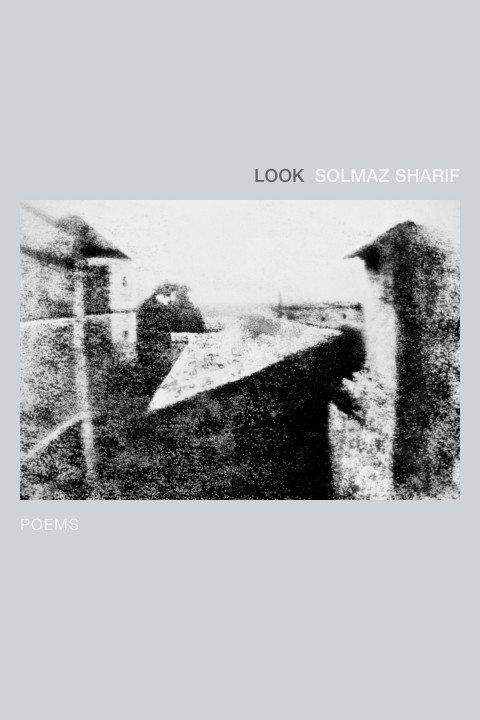 Look by Solmaz Sharif (Graywolf Press, July 2016)
Look by Solmaz Sharif (Graywolf Press, July 2016)
I didn’t want to look. I started reading this book two times before I finished it. I tried to look away, but I knew that’s what I’ve been doing all along. Solmaz Sharif does the heavy lifting here, but this book requires fortitude, nonetheless. To see this world as the poet does, you must let part of your world fall apart.
This is like reading a dictionary in a mirror—the words are backwards, but you can also see yourself, blocking out the light at the edge of the page. Thus, Sharif reconfigures our perceptions of military euphemisms, a wedding updo, a letter to a loved one, a photo of a soldier.
In one sense, an unapologetic voice with unwavering purpose propels these poems. “Deception Story” begins: “Friends describe my DISPOSITION // as stoic. Like a dead fish, an ex said. DISTANCE // is a funny drug and used to make me a DISTRESSED PERSON.” Sharif blends military terms (in caps) with dialogue and creates a polyphonic experience of revelation. The poem ends, “My life in the American dream is a DOWNGRADE, // a mere DRAFT // of home. Correction: it satisfies as a DRAG. // It is, snarling, what I carve of it alone.” Amidst the thick description of violence and discrimination, I need poems like this one which offers a rare moment of first person exposition; I gain traction here with Sharif’s experience of America as an Iranian-American. The focus found in Look is unyielding, but sparingly and, at just the right times, Sharif exposes lyrical moments as both truth and balm. From “Vulnerability Study”:
8 strawberries in a wet blue bowl
baba holding his pants
up at the check point
a newlywed securing her updo
with grenade pins
Sharif never asks, or offers. Look, she directs. And at such images as these, how could you not? But this book is exceptional not only because of the way Sharif reimagines and re-deploys language, but also because she plays with form all through the book. Whether through prose, indentation, section breaks, or brackets, many poems beg to be read twice and three times, and they offer the reader double meanings, squared. “Reaching Guantánamo” simulates the letters inmates receive at Guantánamo; “Dear Salim,” each section begins. But after the greeting, seemingly innocuous language is erased from a lover’s letter to her spouse.
Love, I’m singing that you loved,
remember, the line that went
” “? I’m holding
the just for you.
Yours,
This intrusion on private language eviscerates intimacy; occludes the sender from the letter itself. And so this epistolary poem represents the erasure and elimination of humans that is exercised in our time more than many of us could ever have imagined. Although the form is brutal, and the point heartbreaking, the tenderness of what does appear in this poem compels the heart to reimagine the prisoner of war.
The book is anchored by “Personal Effects,” a poem where Sharif elegizes her uncle who’s life was lost in the Iraq-Iran conflict. In this poem, she interrogates the way photographs skew remembrance. It begins, “I place a photograph of my uncle on my computer desktop, which means I learn to ignore it.” The poem pans, from that point, taking in the panoramic effects of decades of conflicts in Iraq and Iran—how military offensives reach into a family and blow it apart. About a photo of her uncle, Sharif writes,
it was his bare toes
that made me cry
because I realized then he had toes
and because dusted in the white
desert sand they looked
like a corpse’s toes
The book builds toward this moment of gutting simplicity. Solmaz Sharif shows her readers what a poem can do—break apart the world with a single image of bare feet.
What have you read lately that broke your world apart?
 It’s time again for me to make a list of the books I’ve had piling up that I want to add to my cabin dock-reading list, porch-reading list, park-reading list, anything summery-sounding list — you name it. Sometimes when creating these lists, I get overwhelmed with all the possibilities. This time, I’m focusing on (relatively) recent releases from some of my favorite local Minnesota publishers and/or authors.
It’s time again for me to make a list of the books I’ve had piling up that I want to add to my cabin dock-reading list, porch-reading list, park-reading list, anything summery-sounding list — you name it. Sometimes when creating these lists, I get overwhelmed with all the possibilities. This time, I’m focusing on (relatively) recent releases from some of my favorite local Minnesota publishers and/or authors.
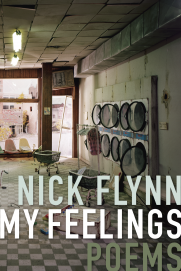 My Feelings: Poems by Nick Flynn (June 2015, Graywolf Press)
My Feelings: Poems by Nick Flynn (June 2015, Graywolf Press)
This fourth book of poems from Flynn is said to be an intimate and tumbling look into the poet’s psyche. Personal, contemporary, and clear, Flynn manages to write striking poems across a spectrum of emotions that reflect the self. Marie Howe says in her blurb about My Feelings, “Here he is again, writing as if his life depends on it, using every trick he can find to carve the tunnel through the mountain. Words are what he uses; silence is the sound they make. […] I read Nick Flynn’s poetry to feel alive.”
 Sins of Our Fathers by Shawn Lawrence Otto (November 2014, Milkweed Editions)
Sins of Our Fathers by Shawn Lawrence Otto (November 2014, Milkweed Editions)
Otto is the acclaimed screenwriter of Oscar nominated film The House of Sand and Fog. He puts his experienced chops to work with Sins of Our Fathers, a novel that is sure to keep you turning the pages with race, greed, morals, and money all at the center of the plot. It chronicles the questionable ethics of small-town banker JW as he deals with depression, gambling, and his complicated relationship with a Native American banker.
 The Birchwood Cafe Cookbook by Tracy Singleton and Marshall Paulsen, with Beth Dooley, Photography by Mette Nielsen (2015, Minnesota Press)
The Birchwood Cafe Cookbook by Tracy Singleton and Marshall Paulsen, with Beth Dooley, Photography by Mette Nielsen (2015, Minnesota Press)
Don’t know ’bout choo, but I get my cook on in the summer! Fresh herbs from my garden, veggies from the farmer’s market, and grilling weather have me jazzed up to test out this new cookbook from local Birchwood Cafe. The cookbook is organized by season, making us think about where our food comes from, and when. The book’s blurbs talk about how the cookbook echoes the restaurant’s innovative approach to food, keeping things fresh and delectable. Excuse me now while I flip to the summer section…
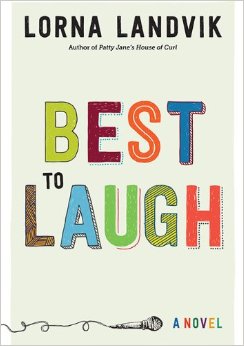 Best to Laugh by Lorna Landvik (2015, Minnesota Press)
Best to Laugh by Lorna Landvik (2015, Minnesota Press)
Best to Laugh is something a little lighter for your summer reads (but don’t mistake that for fluff: Landvik has literary merit fo’ sho’) that will go well with a glass of sauv blanc in hand. Main character Candy moves from our good ol’ land of 10,000 lakes to Hollywood to make her break as a comedian. Hilarity and life lessons ensue. Landvik is queen of wit and charm with her storytelling, and I’m sure this one will keep me (and you) chuckling.
What books are on your summer reading list (Minnesota-based or otherwise)?
What We’re Reading: If the Tabloids Are True What Are You?

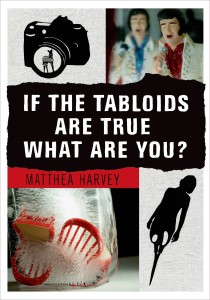 If the Tabloids Are True What Are You? by Matthea Harvey (Graywolf Press, 2014)
If the Tabloids Are True What Are You? by Matthea Harvey (Graywolf Press, 2014)
Matthea Harvey is a rare poet whose work is at once technically sound and formally innovative, original, and moving. If the Tabloids Are True What Are You is her fourth collection and all of her themes and obsessions are on display, careening into one another to create a hybrid work featuring a cast of hybrid characters. The book itself is lovely to look at, filled with original visual art that is synthesized beautifully and seamlessly with the text.
Visual art isn’t new for Harvey: she created the cover image for her 2007 collection Modern Life (Graywolf, 2007), collaborated with painter Amy Jean Porter on a collection of erasures called Of Lamb in 2011 (McSweeney’s), and her sister is the visual artist Ellen Harvey. The difference between her previous work and Tabloids is how closely tied the art and text are. A series of nine poems only have images as titles:
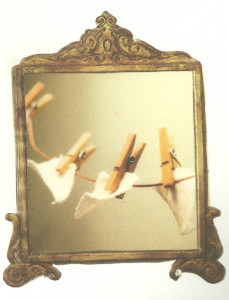
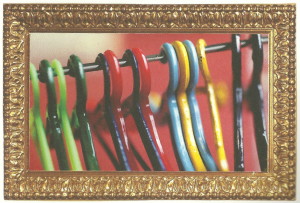
Another four have text cut into silhouettes as titles:

One piece,
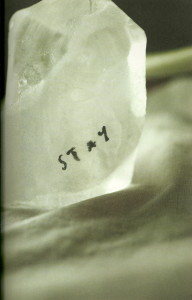
(d)evolves beyond even those and features no text, except the word “stay” in the title.
A poem early in Tabloids, “Michelin Man Possessed by William Shakespeare,” could be read as an ars poetica of hybridity. “I’ve taken many forms over the years, / but this may be the strangest one,” this perfect Elizabethan sonnet begins. Harvey loves taking new forms, inventing impossible or impractical machines. Indeed, her second collection is called Sad Little Breathing Machine (Graywolf, 2004). The final couplet of “Michelin Man Possessed by William Shakespeare” is most apt when talking about Harvey’s work:
Make us a man, or make us a machine—
But do not leave us trapped here in-between.
Whether Harvey fears or loves liminal spaces is hard to know, but she spends a lot of time in them. In only the first 20 pages, Harvey combines visual art with text to create a new form, which takes for its subject a composite being, the mermaid–part human, part fish. The text of these pieces are prose poems, a hybrid form itself.
The standout piece in Tabloids is the long closing piece, “Telettrofono,” a mixture of history, poetry, visual art, and, in one iteration, sound. The piece “was originally created as a soundwalk with sound artist Justin Bennett for Stillspotting NYC: Staten Island.” In this masterpiece, Harvey’s obsessions spiral into and around one another. Using the life of inventor Anonio Meucci, Harvey crafts for him a mythology, using his real life achievements to build a world where mermaids come to land for the love of sound. In Harvey’s narrative, Meucci’s mermaid wife, Esterre, inspires his inventions. The small details that make the piece:
PRESET PATENT MODE
MARINE TELEPHONE: WAY FOR THOSE THAT WORK UNDERWATER CALLED DIVERS HELPED BY THE TELEPHONE TO SPEAK ABOVE WATER (PATENT STILL PENDING AT TIME OF DEATH)
PRESET MARINE TELEPHONE MODE (MERMAID CHORUS)
Calling us “divers
is probably a good idea.
The fusion of invention, history, hybrid creatures, visual art, and text is remarkable and poignant.
Despite all of the crossbred forms, the poems collected here demonstrate Harvey’s command of technique. As off-kilter as her subjects can be, she still knows how to craft a poem that is surprising and complete. The sonnet mentioned earlier is impressive on its own, but other poems feature well placed revelations that drive the poems forward. The opening “Mermaid” poems create a new mythology of mermaids:
“At least she’s all mermaid: never gets tired of swimming, hates the thought of socks.”
(“The Straightforward Mermaid”)
“These days, her sisters trail cruise ships, hunting for orange prescription bottles that might be bobbing in the ship’s wake.”
(“The Impatient Mermaid”)
“Mer-funerals are the worst since, poof, the merfolk just morph into seafoam.”
(“The Morbid Mermaid”)
Because, of course mermaids dissolve into seafoam when they die. Of course they’re addicted to lost Xanax and hate socks. Again, it’s the small details that elicit small gasps and surprised laughs that make these poems so exciting.
Whether Harvey planned it or not, she has been building up to If the Tabloids Are True What Are You? in all of her previous work. It’s still jarring and humbling to see how well deployed her craft is in this book. It makes me wonder what she’ll do next, where she can go from here. Based on her previous work, it’s sure to be a surprise.
What other writers currently working are at the top of their game right now?





